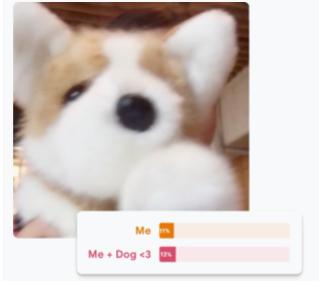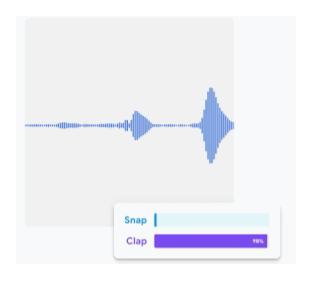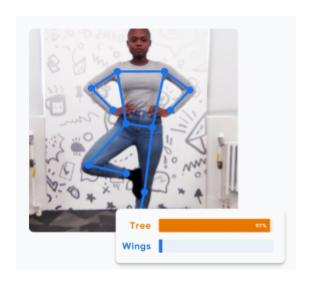Create an AI-Informed Class
- Karen Walstra

- May 8
- 9 min read
Artificial Intelligence (AI) is all around us. It's vital that we equip our learners with a basic understanding of Artificial Intelligence in practical, hands-on ways. Create a class environment where learners become informed AI users and creators.

We need to build their knowledge base from scratch. Included are practical ideas and concepts for you, as the teacher, to use. This isn't just about teaching them how to use AI, but also why and what it is. Including having open discussions about responsible and ethical AI use is crucial.
By equipping our learners with a basic grasp of AI principles, we empower them to navigate this technology confidently, ethically, and creatively. It's not just about teaching them to use AI tools; it's about fostering critical thinking, problem-solving abilities, and an understanding of the implications of this powerful technology.
Explore the practical activities to introduce AI concepts in a fun and accessible way, ensuring learners are future-ready and technologically literate citizens.
1. Real-World AI-focused Examples
Begin by exploring real life examples. Discuss how AI is already present in their lives:
Voice assistants (like Siri, Alexa, or Google Assistant).
Recommendation systems on streaming services (like Netflix or YouTube).
Filters on social media apps.
Video games where they play against the computer.
Booking tickets online, for a flight or a concert
Online Shopping (such as Sixty60, Takealot, or Woolies Dash)
Watch the YouTube video “How AI works in everyday life | Google AI”. Get learners to record and discuss all the different use cases. During the discussion go through the video again slowly, for them to discuss each option illustrated.
2. AI Movie Examples for Lesson Discussions
What about introducing learners to AI concepts through engaging, age-appropriate movies!
Look for child-friendly films that feature AI or robots, which could spark their curiosity and discussion.
Here are some old movies about robots. Explore and see if you can find them on digital networks. There are links to their trailers or snippets of them in the reference list.

Disney’s Big Hero 6 (2014):
This Disney animated film features Baymax, a lovable healthcare robot. It's a heartwarming story about friendship and the positive potential of technology
Disney (2014) Big Hero 6 - Official US Trailer 2 https://youtu.be/8IdMPpKMdcc?si=VLMN0SI49_sWTM3R

WALL-E (2008):
The Disney Pixar UK movie, WALL-E tells the story of a lonely robot on a deserted Earth.
It's a beautiful film with a strong environmental message and explores themes of artificial intelligence and emotion.
Disney Pixar UK. (2008). WALL•E | Trailer | Official Disney Pixar UK https://youtu.be/alIq_wG9FNk?si=nJKpaZ6A8BmBe42s

The Iron Giant (1999):
This Warner Bros. Entertainment animated classic film is about a young boy who befriends a giant robot from outer space. It's a touching story about friendship, acceptance, and the choices we make.
The Iron Giant | Full Movie Preview | Warner Bros. Entertainment https://youtu.be/0ynvTQum390?si=sZEuaOGioVoAorPb

Robots (2005):
This 20th Century Fox animated film is set in a world populated entirely by robots and involves themes of invention and perseverance.
Rotten Tomatoes Classic Trailers. 20th Century Fox. Robots (2005) Trailer #1 | Movieclips Classic Trailers https://youtu.be/zyLI71Z0RF4?si=RjFwhsYdDcp6QMd9

Astro Boy (2009):
This Summit Entertainment and Magi Studios (2009) movie Astro Boy is a story of a scientist who loses his son. He creates a robot child to take his place. The film follows the adventures of Astro Boy, a powerful robot with a human heart.
HitFix. Summit Entertainment and Magi Studios (2009) Astro Boy - Official Trailer https://youtu.be/1AhqOHom9BY?si=DJoK-PO26Tw_6o52
When watching these movies or even the trailers with learners, you can:
Discuss the robots' abilities and how they relate to real-world AI.
Talk about the ethical implications of AI, such as how robots should be treated and what responsibilities humans have in creating them.
Encourage children to imagine their own AI-powered inventions.
Now let’s explore practical lesson ideas to teach AI concepts.
3. Image Recognition and Classification:
"Training" a Simple AI:
Use online tools or apps that allow children to upload images and "train" a simple AI to recognize different objects. For example, they can train it to distinguish between different types of fruits, animals, or even their own drawings.
This helps them understand how machine learning works by feeding data to a system
Google's Teachable Machine:
This web-based tool allows learners to train machine learning models using a webcam or microphone.
They can train models to recognize images, sounds, or poses and sort them.
It's a very visual and interactive way to learn about machine learning.
The trained information can be downloaded and used in other applications. Explore Teachable Machines: https://teachablemachine.withgoogle.com/
Emotion Jellyfish
MIT’s Raise AI: Dancing with AI lesson example - Emotion Jellyfish, uses MIT Scratch and facial recognition to determine the mood of the jellyfish.
Scratch - Dancing with AI - Emotion Jellyfish https://playground.raise.mit.edu/create/?project=https://dancingwithai.media.mit.edu/projects/EmotionJellyfish.sb3

Car or Cup
The Machine Learning for Kids lesson, Car or Cup. Learners would train the computer to be able to sort photos into groups. Then teach a computer to recognise pictures of objects.
Go to: Machine Learning for Kids, find the "Car or Cup" activity on the worksheets page, download the content

Physical Object Sorting Games:
Create physical sorting games where children categorize objects based on specific features. This mimics how AI classifies data.

4.Programming Robots:
Use programmable robots designed for children. The learners can programme the robots to perform tasks, navigate obstacles, and respond to their environment.
This combines AI concepts with physical interaction.

"Algorithm" Dance or Movement:
Create simple dance routines or movement sequences that follow a specific set of rules (an algorithm). This helps learners understand how algorithms work in a fun, active way.
How to Train Your Robot
Raise.MIT.edu and i2Learning.org developed "How to Train Your Robot", exploring robotics, machine learning and ethics.
This project uses a Micro:bit which is programmed using Scratch blocks, an Elecfreaks
micro-bit-smart-cutebot is used. The other suggestion in the lesson is a Yahboom robot, or similar robots such as a Kitronik Robotics Kit or Elecfreaks "TPBot Car for

Micro:bit" could also be used.
The images indicate the features of the robot that learners could programme. Image from the "Educator Guide AI Training your Robot Companion" https://docs.google.com/document/d/1-WTfVPhRwY_VJPVRVL0nBJPFORwzTUZs/edit?pli=1&tab=t.0
How to Train Your Robot's code in Scratch https://playground.raise.mit.edu/httyr/?project=https://mitmedialab.github.io/arduino-scratch2/HTTYR%20Projects/Templates/command_rec_ai.sb3

5. Data
Databases are organised collections of data stored electronically, for example online video streaming, online grocery stores, e-finance.
Data Collection and Visualization
Have learners collect simple data, such as the colours of cars passing by or the types of birds they see.
Then, they can create charts or graphs to visualize the data and identify patterns. The example of the data collection is created in Purple Mash using 2Graph
This introduces the learners to the concept of data analysis, which is a key part of AI.
Training Data
Machine Learning training a computer on given data. Refer to the Teachable Machine activities, and how teaching and training the tools is collecting Data Teachable Machine https://teachablemachine.withgoogle.com/ Learners can again train data.
Data Kids Activity Library
This "Data Kids Activity Library" from The Tableau by Salesforce has a range of data topics. https://www.tableau.com/academic/data-for-kids/activities
Use these resources in lessons to create an awareness of types of data, and spark class discussions about how data plays a role in our everyday lives. Explore the range of topics to discuss. Learners would begin to develop data literacy skills, learning how to interpret information and draw conclusions from visual representations.

6. Chat Bots - Natural Language Processing (NLP)
Creating Simple Chatbots:
Use kid-friendly platforms that simplify chatbot creation. Children can design basic conversations and learn how computers process language.
This introduces them to the concept of how AI can understand and respond to human language.

My Scratch “chatbot”
Create on interactive programme - similar to a chatbot
Explore this "Maths Addition Bot" example https://scratch.mit.edu/projects/839488682
Let your children be creative and come up with their own ideas.
MIT App Inventor Therapist Bot
The MIT App Inventor Therapist Bot allows learners to explore whether an app on your phone be your next therapist? MIT used YR Media news story by Ajani Torres-Cedillo about apps that use artificial intelligence to power therapy bots. The article is Could Your Next Therapist Be Your Phone? This MIT App Inventor tutorial shows learners how to make their own therapist bot app. Explore https://appinventor.mit.edu/explore/resources/ai/therapist-bot
Cyclops - a Personal Desktop Assistant Bot
Mandred Tech’s Cyclops - a Personal Desktop Assistant Bot, is built on an Arduino Uno and python is the coding language. Learners build, create and code an assistant bot
Mandred Tech Cyclops on Instructable https://www.instructables.com/member/Mandred+Tech/
Tinkercad Mandred Tech’s Cyclops https://www.tinkercad.com/projects/Cyclops-a-Personal-Desktop-Assistant-Bot

Courses and Projects to Teach Learners about AI
Experience AI
Google Deepmind and Raspberry Pi Foundation collaborated to create Experience AI, a series of lessons for teachers to use to teach their learners aged 11–14, about artificial intelligence and machine learning. The programme provides detailed lessons and resources for teachers, as well as an EdX course. Therefore supporting teachers in the fast-moving area of AI, with lessons that will inform and excite your learners about the subject.
Explore Experience AI: https://experience-ai.org/en/

Raise Playground
MIT’s RAISE Playground consists of interactive AI applications, using a block-based programming platform that lets learners use machine learning models, robotics, and AI engines to make projects. There is a wide range of projects to conduct with your learners, such as Image classification, Text classification, Natural language processing, Reinforcement learning, Music generation, Affective computing, Gesture recognition, Social robotics, Microcontroller robotics and more

Machine Learning for Kids
Machine Learning for Kids: https://machinelearningforkids.co.uk/#!/worksheets with a range of lesson ideas, use the pre-trained models https://machinelearningforkids.co.uk/#!/pretrained in the lessons or get the learners to train their own.

AI with MIT App Inventor
MIT is building tools into App Inventor that enable even beginning learners to create original AI applications that would have been advanced research a decade ago. MIT App Inventor emphasises a pedagogical approach of active constructionist learning where learners create projects and programmes that allow them to create examples of their own ideas.
Creating new opportunities for learners to explore the possibilities of AI and empowers learners as creators of the digital future.
AI with MIT App Inventor includes tutorial lessons and project work suggestions for learners to explore. Each unit also includes supplementary teaching materials: lesson plans, slides, unit outlines and assessments.
Explore MIT App Inventor's AI projects https://appinventor.mit.edu/explore/ai-with-mit-app-inventor

Consider the following
Focus on ethical and responsible use of AI
Teach learners to “do no harm” when creating AI resources. Promote and discuss being truthful, fair, and honest.
Focus on constructionist learning, through problem-solving
Encourage critical and analytical thinking. Promote creativity. Instead of just telling learners about AI, let them build their own simple AI models, tinker with chatbots, or create programmes that use image recognition, etc. allowing them to actively construct their understanding through hands-on experience.
Encourage experimentation
Allow learners to experiment and make mistakes, as this is a crucial part of the learning process. “It’s okay to fail, it is not okay to give up” Develop perseverance and determination in your learners.
Explore the "Why"
Encourage learners to ask questions. Promote curiosity. Explain why these tasks are related to AI and how they demonstrate key AI concepts.
Make it playful
Keep the activities fun and engaging to maintain learners’ interest.
Final thoughts
As we've explored, empowering learners with AI knowledge isn't just a forward-thinking idea—it's an urgent necessity. The recent Common Sense (2024) AI survey highlighted a critical gap: teens are actively using AI, often without guidance or awareness from parents and schools. With a significant percentage of parents unaware of their children's AI usage and a lack of clear school guidelines, we, as educators, must step up. It's not enough to simply acknowledge AI's presence; we need to actively teach our learners what AI is, how it works, and why ethical and responsible use is of utmost importance.
We should show them how AI can assist in truly understanding information, how it can be a powerful learning tool, and how they can use it creatively to solve problems. We want to steer them away from simply using AI to 'cheat' the system. In the long run, relying on AI for shortcuts will only cheat themselves, as they'll miss out on truly grasping and retaining knowledge when it comes to assessments. Understanding AI isn't just a 'nice-to-have' anymore—it's essential for their future success in a world increasingly shaped by this technology."
By engaging in these practical, hands-on activities, we can equip them with the tools and understanding to navigate this technology confidently and responsibly.
Let's ensure our learners are not just passive users, but informed, critical thinkers who can harness AI's potential for learning, creativity, and problem-solving. The time to bring AI education into the classroom is now—for their sake, and for the future.
References:
How AI works in everyday life | Google AI https://youtu.be/oJC8VIDSx_Q?si=juC4fjHzOsnhhnXV
RAISE Playground created by the MIT RAISE Initiative and the Personal Robots Group at the MIT Media Lab https://playground.raise.mit.edu/
Raise Playground: Dancing with AI lesson example - Emotion Jelly fish. https://playground.raise.mit.edu/create/?project=https://dancingwithai.media.mit.edu/projects/EmotionJellyfish.sb3
Disney (2014) Big Hero 6 - Official US Trailer 2 https://youtu.be/8IdMPpKMdcc?si=VLMN0SI49_sWTM3R
Disney Pixar UK. (2008). WALL•E | Trailer | Official Disney Pixar UK https://youtu.be/alIq_wG9FNk?si=nJKpaZ6A8BmBe42s
The Iron Giant | Full Movie Preview | Warner Bros. Entertainment https://youtu.be/0ynvTQum390?si=sZEuaOGioVoAorPb
Rotten Tomatoes Classic Trailers. The Iron Giant (1999) Trailer #1 | Movieclips Classic Trailers https://youtu.be/1XHf94YqGyQ?si=v7NEiwKOkQBMcwnQ
Rotten Tomatoes Classic Trailers. 20th Century Fox. Robots (2005) Trailer #1 | Movieclips Classic Trailers https://youtu.be/zyLI71Z0RF4?si=RjFwhsYdDcp6QMd9
HitFix. Summit Entertainment and Magi Studios (2009) Astro Boy - Official Trailer https://youtu.be/1AhqOHom9BY?si=DJoK-PO26Tw_6o52
Google. Teachable Machine https://teachablemachine.withgoogle.com/
Mandred Tech Cyclops on Instructable https://www.instructables.com/member/Mandred+Tech/
Tinkercad Mandred Tech’s Cyclops https://www.tinkercad.com/projects/Cyclops-a-Personal-Desktop-Assistant-Bot
Common Sense (Sept, 2024) New Report Shows learners Are Embracing Artificial Intelligence Despite Lack of Parent Awareness and School Guidance
Ajani Torres-Cedillo (May 2017). Could Your Next Therapist Be Your Phone?YR media https://yr.media/tech/could-your-next-therapist-be-your-phone/
MIT App Inventor Therapist Bot App. https://appinventor.mit.edu/explore/resources/ai/therapist-bot
Machine Learning for Kids https://machinelearningforkids.co.uk/#!/worksheets
Machine Learning for Kids - pre-trained models https://machinelearningforkids.co.uk/#!/pretrained
Experience AI: https://experience-ai.org/en/
Walstra, K. Scratch "Maths Addition Bot" example https://scratch.mit.edu/projects/839488682
The Tableau by Salesforce. Data Kids Activity Library. https://www.tableau.com/academic/data-for-kids/activities
Teachable Machine https://teachablemachine.withgoogle.com/
How to Train Your Robot's code. Educator Guide https://docs.google.com/document/d/1-WTfVPhRwY_VJPVRVL0nBJPFORwzTUZs/edit?pli=1&tab=t.0
How to Train Your Robot's code in Scratch https://playground.raise.mit.edu/httyr/?project=https://mitmedialab.github.io/arduino-scratch2/HTTYR%20Projects/Templates/command_rec_ai.sb3
2Simple. Purple Mash. 2Graph. https://www.purplemash.com/#tab/home/tools
Enjoy playing. If you want to learn about the AI workshops I offer, or if you would like a chat about AI and your school, reach out to me.
Dr. Karen Walstra info@karenwalstraconsulting.co.za




















Comments